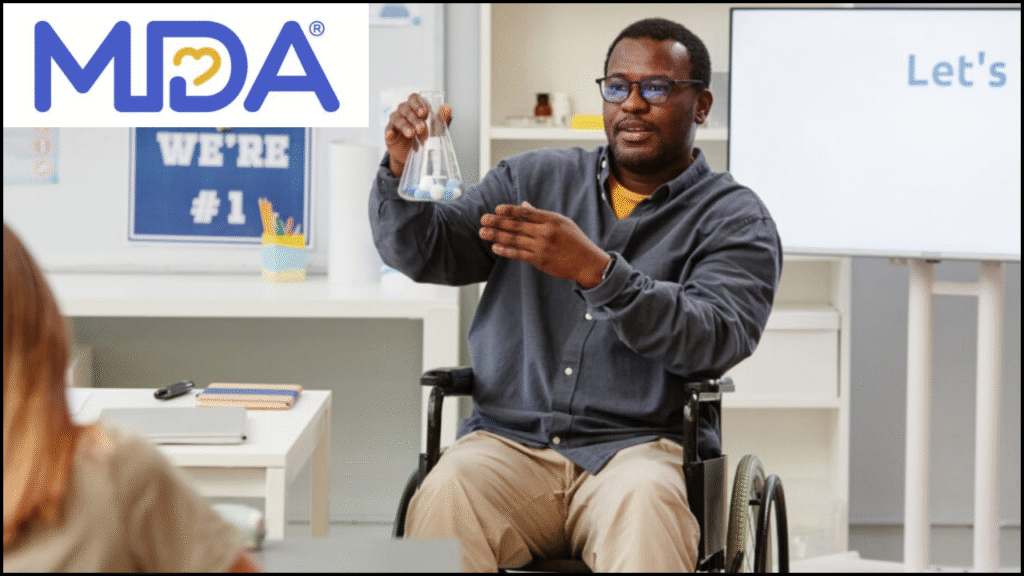
Muscular Dystrophy Association STEM Explorations represents a significant initiative that blends education, science, and advocacy to empower young learners while raising awareness about muscular dystrophy. This program encourages students to engage in hands-on learning, explore careers in science, technology, engineering, and mathematics, and develop solutions that can positively impact lives. Participation in this program not only enriches academic growth but also fosters compassion, resilience, and innovation among future scientists and leaders.
Table of Contents
Overview of Muscular Dystrophy Association STEM Explorations
- The Muscular Dystrophy Association (MDA) focuses on supporting families, funding research, and advancing awareness for neuromuscular diseases.
- The STEM Explorations program is an outreach effort designed to connect students with real-world science, technology, engineering, and math experiences.
- The Purpose is to spark curiosity in young minds while simultaneously highlighting how STEM can drive breakthroughs in healthcare and accessibility.
- The Participants range from middle school learners to high school and early college students who show interest in innovation and medical research.
- A unique aspect lies in linking classroom STEM lessons to real-world challenges faced by individuals living with muscular dystrophy.
Key Goals of the STEM Explorations Program
- Encourage Awareness: Introduce students to the realities of muscular dystrophy and its impact on families.
- Promote Inclusion: Highlight accessibility, adaptive technologies, and inclusive engineering solutions.
- Inspire Careers: Motivate students to pursue careers in biomedical research, healthcare, robotics, and data science.
- Foster Problem-Solving: Enable learners to tackle challenges with empathy and innovation.
- Strengthen Partnerships: Build bridges between schools, research institutions, and advocacy groups.
Structure of the Program
- Interactive Workshops: Focus on biomedical engineering, robotics, genetics, and computer science.
- Virtual Sessions: Online modules for students across different regions to ensure wide accessibility.
- Hands-on Projects: Prototypes of assistive devices, coding simulations, or data analysis exercises.
- Mentorship Opportunities: Guidance from scientists, engineers, and healthcare professionals.
- Awareness Campaigns: Students engage in projects to spread awareness about muscular dystrophy.
Core Learning Areas
- Genetics and Biology: Understanding muscular dystrophy at the cellular and molecular levels.
- Engineering Design: Creating devices that support mobility and accessibility.
- Computer Programming: Using coding to model muscle functions or simulate treatment approaches.
- Robotics and AI: Exploring automated solutions for daily living activities.
- Public Health and Advocacy: Learning about the importance of healthcare policies and community engagement.
Impact on Students
- Knowledge Expansion: Exposure to scientific disciplines linked with healthcare innovation.
- Skill Development: Growth in critical thinking, teamwork, and project-based learning.
- Empathy Building: Understanding the challenges faced by individuals with neuromuscular diseases.
- Career Direction: Clearer pathways for pursuing STEM-related higher education and professions.
- Social Responsibility: Stronger sense of advocacy and community participation.
Comparison of STEM Explorations with Traditional STEM Programs
| Aspect | STEM Explorations (MDA) | Traditional STEM Programs |
|---|---|---|
| Focus Area | Neuromuscular diseases, healthcare innovation, advocacy | General STEM education |
| Target Audience | Students interested in health, biology, and inclusion | Students with broad STEM interests |
| Learning Style | Problem-based learning with real patient scenarios | Abstract and theoretical concepts |
| Unique Feature | Integration of medical research and advocacy | Focus on technology and engineering only |
| Outcome | Empathy-driven innovation and awareness | Skills development in STEM fields |
Examples of Student Activities
- Designing an Assistive Tool: Students create lightweight mobility aids using engineering principles.
- Data Analysis Project: Learners examine clinical research data to identify potential genetic patterns.
- Virtual Lab Experiments: Simulations showing how muscle fibers weaken in neuromuscular diseases.
- Awareness Campaign: Students design posters, presentations, or social media outreach.
- Innovation Challenge: Team competitions to propose solutions for accessibility barriers.
Partnerships and Collaborations
- Schools and Universities: Provide platforms for delivering STEM Explorations workshops.
- Healthcare Institutions: Share insights on real-world applications of medical research.
- Tech Companies: Support innovation with software, AI tools, and robotics kits.
- Non-Profit Organizations: Collaborate on awareness and advocacy campaigns.
- Government Agencies: Endorse the program under STEM promotion initiatives.
Benefits for the Muscular Dystrophy Community
- Awareness Growth: Students spread understanding of muscular dystrophy in their networks.
- Innovative Solutions: Potential student ideas contribute to accessibility research.
- Future Advocates: Young learners become long-term supporters of neuromuscular causes.
- Medical Interest: Inspires future scientists to join research on muscular dystrophy.
- Community Connection: Stronger ties between patients, families, and educators.
Challenges Faced by the Program
- Limited Resources: Ensuring schools in rural areas have access to technology.
- Funding Constraints: Securing sponsorships for nationwide expansion.
- Awareness Gap: Overcoming the lack of knowledge about neuromuscular diseases.
- Time Commitment: Balancing STEM projects with school curriculum schedules.
- Scalability Issues: Reaching diverse populations with equal effectiveness.
Strategies for Improvement
- Virtual Expansion: More online labs and digital simulations for accessibility.
- Scholarship Incentives: Offering financial aid for students pursuing STEM careers.
- Community Events: Organizing science fairs highlighting neuromuscular innovations.
- Alumni Network: Connecting past participants with new students for mentorship.
- Global Collaboration: Partnering with international STEM initiatives.
Wrapping Up
Muscular Dystrophy Association STEM Explorations represents an inspiring blend of science, education, and social responsibility. The program not only equips young learners with valuable knowledge but also instills empathy and a passion for making a difference. Combining STEM education with advocacy creates a meaningful path for future leaders to innovate solutions for muscular dystrophy while building inclusive communities.
What You Need to Know
Q1. What is the main purpose of MDA STEM Explorations?
The main purpose is to inspire students to pursue STEM while fostering awareness and empathy for people with muscular dystrophy.
Q2. Who can participate in the program?
Students from middle school to early college levels, especially those with an interest in science, healthcare, or engineering.
Q3. How is this program different from other STEM initiatives?
Unlike traditional programs, it directly connects STEM with medical research, accessibility, and advocacy for neuromuscular diseases.
Q4. Does the program offer career guidance?
Yes, mentorship opportunities connect students with professionals in medicine, technology, and scientific research.
Q5. What impact does it have on the muscular dystrophy community?
The program raises awareness, fosters innovative solutions, and builds a generation of empathetic advocates and researchers.





